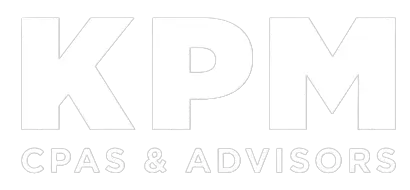There’s no one-size-fits-all benefits package for employers. The optimal combination of tax-friendly benefits depends on a variety of factors, including the size and demographics of your workforce. However, one option to consider, if you haven’t already, is an adoption assistance program.
Purpose & Covered Expenses
The purpose of adoption assistance programs is to provide participants with payments or reimbursements for qualified adoption expenses. Under the Internal Revenue Code, such programs must adhere to formal, written plan documents that specify the terms under which payments or reimbursements will be provided.
Adoption assistance programs are generally funded by employers. Because of the relatively limited number of potential participants, they’re typically offered as a menu item in cafeteria plans.
To qualify for favorable tax treatment, program benefits must be provided, as mentioned, under a written plan document. In addition, all eligible employees must be notified about the program’s existence, even if they’re unlikely to be interested in participating. Organizations can’t set up programs to discriminate in favor of owners, officers, or highly-paid employees.
Qualified adoption expenses must be “reasonable and necessary” and meet other requirements. Some expenses typically covered under an adoption assistance program include:
- Adoption agency fees
- Court costs
- Attorneys’ fees
- Travel costs (including meals and lodging)
- Additional expenses incurred to adopt a foreign child
Programs may set annual or lifetime limits on the dollar amount of benefits that participants can receive.
Tax & Nontax Advantages Of Adoption Assistance Programs
Normally, taxpayers can claim a credit for qualified adoption expenses on their federal tax returns, up to a stated annual limit. Although the credit isn’t available for payments or reimbursements received through an employer’s adoption assistance program, qualified adoption expenses reimbursed through an eligible program are tax-free to employees up to the program’s stated limit.
Let’s back up. Under the Internal Revenue Code, an employee can exclude from tax up to a maximum of $16,810 in eligible adoption expenses in 2024. This amount is exempt from income tax withholding and “FICA” tax (payroll tax under the Federal Insurance Contributions Act). In 2024, FICA tax is 6.2% on the first $168,600 of wages along with a 1.45% Medicare tax. These rates also apply to the employer’s share of FICA tax. (Note: There’s no exclusion for federal unemployment tax under the Federal Unemployment Tax Act, commonly referred to as “FUTA.”)
However, you may establish your own annual limits on qualified adoption expense payments or reimbursements under the program (and in the plan document) that are less than the federal maximum exclusion amount — for instance $5,000 or $10,000. If you choose this option, a portion of the benefits that participants receive may be subject to taxes. Also, you’re responsible for reporting payment or reimbursement amounts to participating employees on their Forms W-2, Wage and Tax Statement.
Keep in mind that organizations can’t claim a tax credit for paying or reimbursing adoption expenses. However, as with other fringe benefits, organizations generally can deduct expenses incurred to launch and administer the program.
There also are nontax advantages to adoption assistance programs. Many organizations add them to their cafeteria plan menu to help attract a wider array of job candidates. Programs that make adoption more affordable can also increase staff loyalty and help enhance your employer brand as a family-friendly organization that respects work-life balance.
One Option Among Many
Again, an adoption assistance program represents just one type of fringe benefit among many possibilities. But if it’s something that your employees would value and that would likely draw quality job candidates in your industry, you should probably take a closer look. Contact us for help assessing the costs, potential advantages and risks, and tax impact of any fringe benefit your organization is considering.

